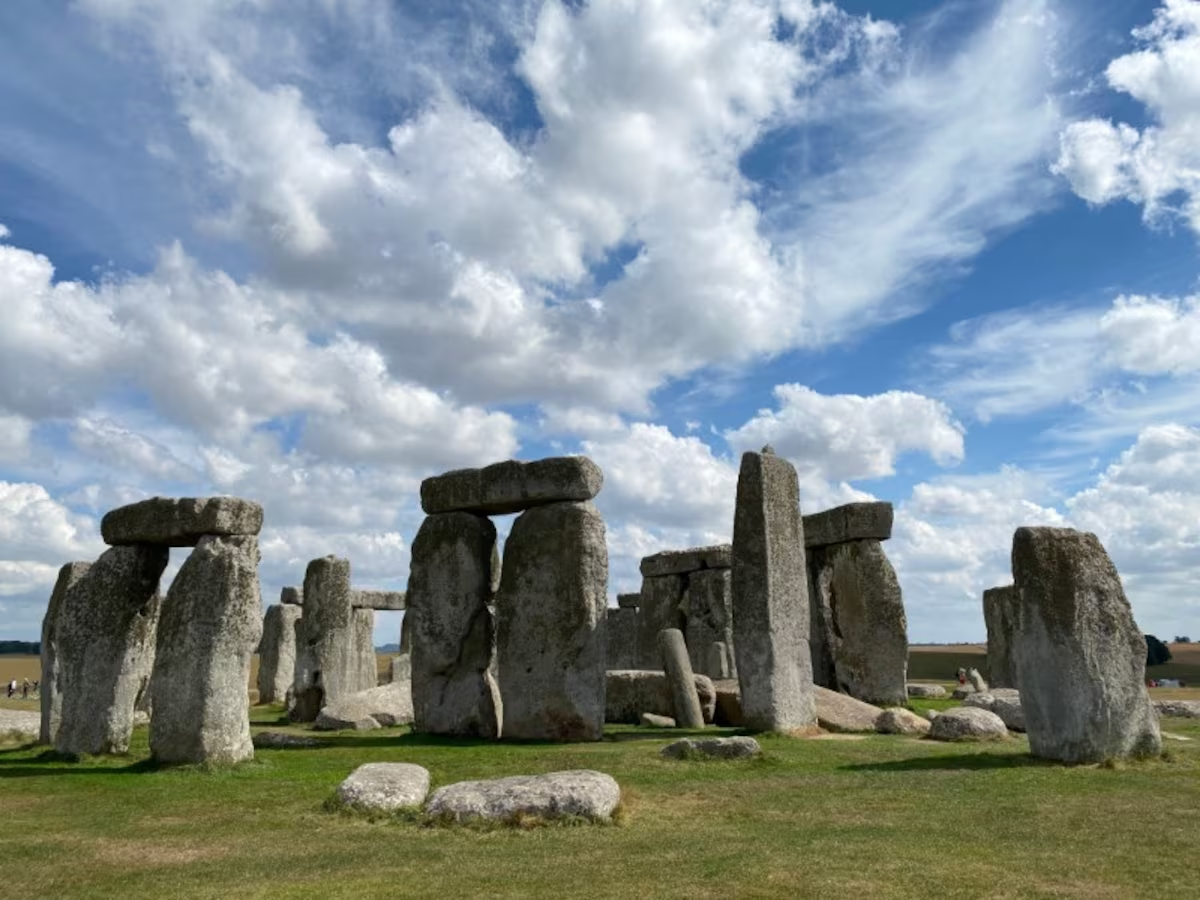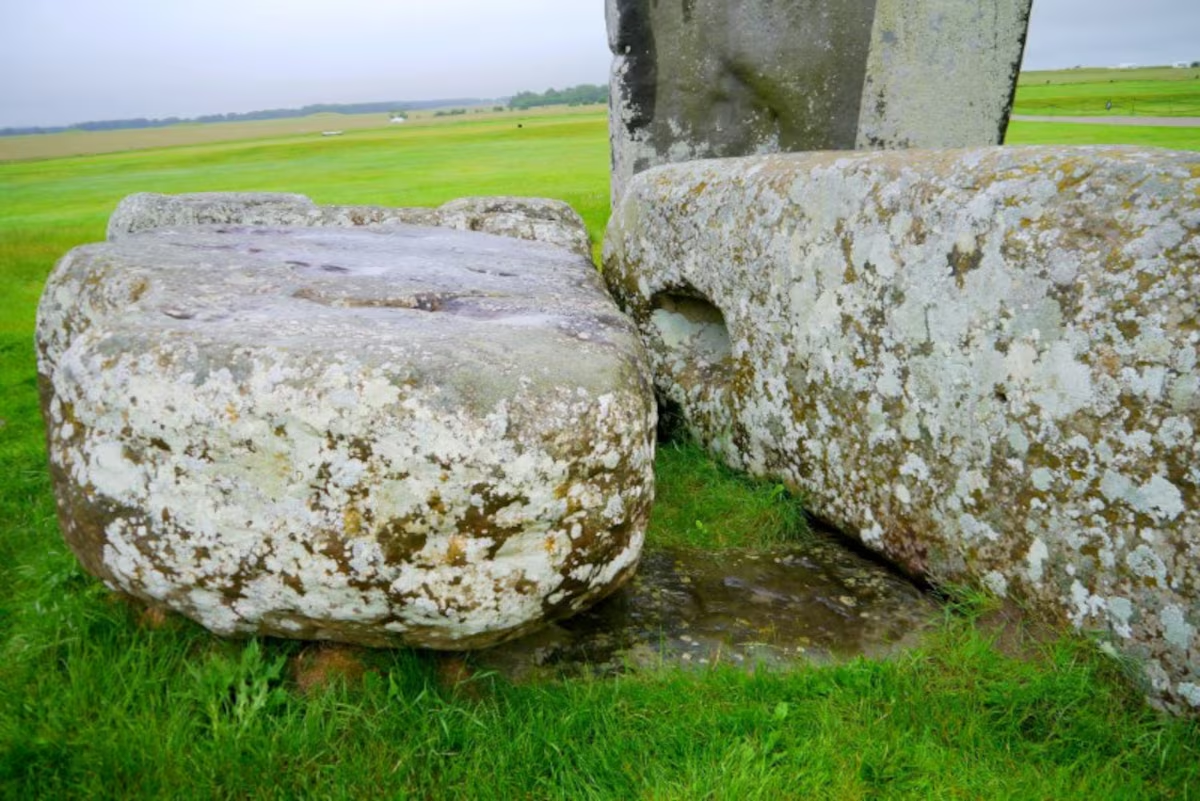At the centre of Stonehenge lies the Altar Stone, a hefty slab of sandstone whose origin and purpose have been among the famed megalithic monument's enduring mysteries. A new analysis has revealed that this rectangular colossus took a remarkable journey to become part of one of humankind's ancient wonders.
Its geochemical fingerprint is a perfect match for bedrock found in northeastern Scotland, researchers said on Wednesday, indicating that the Altar Stone - weighing an estimated six tons - was transported roughly 700-750 kilometres (435-465 miles) by Stonehenge's creators to Salisbury Plain in southern England.
The findings left the researchers stunned. No stone from any other monument dating to that time period is known to have been transported such a distance.
"We couldn't believe it," said Anthony Clarke, a doctoral student in geology at Curtin University in Australia and lead author of the study published in the journal Nature, opens new tab.
The common belief for the past century had been that it had been sourced from Wales like some other large Stonehenge components. The Altar Stone, recumbent rather than erect, is 4.9 metres (16 feet) long, a metre (3-1/4 feet) wide and half a metre (1-2/3 feet) thick. It is grey-green sandstone, though its rippled and weathered surface now has a red-brown colouration.
Transporting it such a distance - perhaps by both land and sea - suggests a degree of societal organization among Britain's Neolithic communities unexpected for the time when it was moved, thought to have been about 4,600-2,500 years ago, roughly contemporaneous with ancient Egypt's great pyramids.
"This finding radically refines our understanding of prehistoric connectivity and the technology of Neolithic Britain," said Curtin University isotope geology professor and study co-author Chris Kirkland.
Previous analyses had identified two primary types of stone used to build the monument's stone circle: some sourced locally from near Marlborough around 25 km (15 miles) away and some from around Pembrokeshire in Wales 250 km (150 miles) away.
Sandstone bears grains of various minerals. The researchers analysed the age and chemistry of zircon, apatite and rutile grains in two Altar Stone fragments. The zircon primarily dated to 1-2 billion years ago. The apatite and rutile dated to about 450 million years ago.
|
|
| The Altar Stone at the ancient monument Stonehenge located on Salisbury Plain is seen underneath two bigger Sarsen stones in Wiltshire, Britain in this undated photo released on August 14, 2024. Professor Nick Pearce, Aberystwyth University/Handout via Reuters |
The chemistry of the fragments matched Scottish bedrock from the Orcadian Basin region, reaching from Inverness to Scotland's northeastern tip and beyond.
"It's a micro-analysis technique," said geologist and study co-author Nick Pearce of Aberystwyth University in Wales.
The researchers used a laser beam to vaporize a chosen mineral in the rock, then analysed the gas vapour, measuring the ratio of isotopes - variants of a given element - of uranium and lead to determine the age of the mineral.
"And the match of this sort of age fingerprint that we got from these minerals is identical to the Orcadian Basin in Scotland, not Wales," Pearce said. "So, suddenly it's gone from being 250 kilometres (155 miles) from Stonehenge, give or take, to 700 kilometres from Stonehenge."
The Altar Stone, partly covered by two other fallen stones, is the only one of the monument's large stones not part of its circular design. While the precise location where it was sourced remains unknown, getting such a massive cargo from Scotland to Wiltshire would have been a challenge, underscoring the Altar Stone's importance to Stonehenge's builders.
"How it was moved is uncertain but marine shipping is a realistic suggestion, given the mountainous and forested terrain of possible land routes," said Aberystwyth University geologist and study co-author Richard Bevins.
The simple boats of the time could have been used to transport it down the coastline, the researchers said.
The Altar Stone's evocative name comes from a 17th century interpretation by English architect Inigo Jones.
"It got its name because it is flat like a table, but we don't know if it always was like this, nor do we know what exactly it was used for. We do know the setting sun on the solstice lights it up," Kirkland said.
"It really is unique in the monument," Bevins said. "Loads of uncertainty about what the Altar Stone means."
Stonehenge, built in multiple stages over about 500 years starting at approximately 3000 BC, remains a site of fascination, drawing a stream of tourists from around the world.
"It provides a connection to our ancient ancestors who made something that has endured time," Kirkland said.






















































